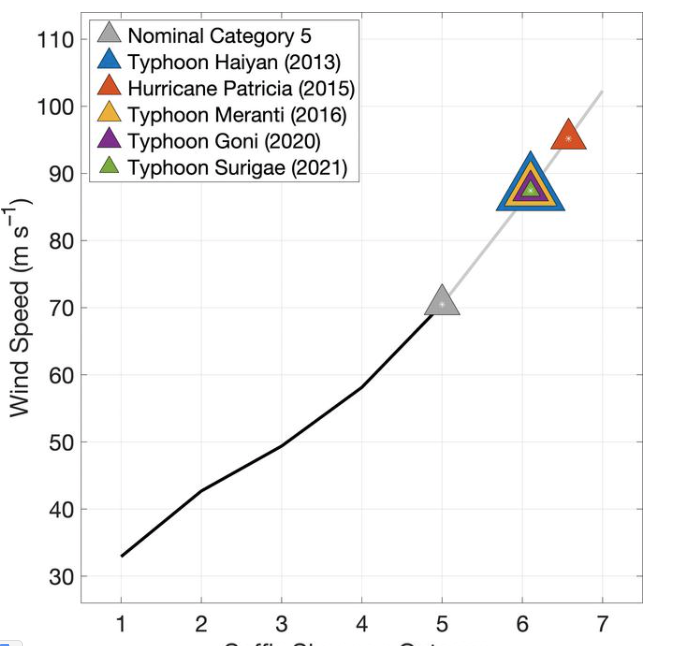The heat trapped by fuel emissions is shaking the Earth’s atmosphere with increasing fury. Some winds are blowing so fiercely that researchers are proposing to add an even more extreme category to the Saffir-Simpson Hurricane Wind Scale.
“As a smart scientist, you never want the wolf howling,” Lawrence Berkeley National Laboratory climate scientist Michael Wehner told USA Today’s Dinah Voyles Pulver. But “the wolf is here.”
The scale the US has used since the early 1970s ranges from the pesky 120 kilometer (74 mph) winds of Category 1 to the dreaded 250 km/h (157 mph) or more for Category 5.
Such powerful winds can level homes and destroy infrastructure, rendering regions uninhabitable for weeks or even months. But Wehner and former climate scientist James Kossin argue that 252 km/h no longer captures the wind shear of these storms.
“That’s because climate change is changing the temperature and humidity,” Wehner explained to Li Cohen of CBS News: “Because climate change is increasing temperature and humidity – which are the energy sources for a hurricane or tropical cyclone – we would expect that speed limit to increase. And indeed it is.”
From 1980 to 2021, there was an increase in storms beyond the base level of Category 5. That’s why the researchers propose expanding the classification system to include Category 6, which would cover hurricanes with winds of almost 310 km/h (192 mph) or more.

Since 1980, at least five storms have formed to fall into this category, all in the last 9 years.
This includes Hurricane Haiyan, one of the most powerful tropical storms ever recorded. In November 2013, the storm hit the Philippines with winds of 315 km/h, leaving more than 4 million people homeless and killing more than 6,300 people.
The team says their modeling suggests that the Gulf of Mexico will experience Category 6 storms at twice the rate of global warming of about 2°C above pre-industrial levels, and that areas close to the Philippines can expect an increase of about 50%.
As the team notes, the current scale is inadequate. Hurricane Patricia, which hit Mexico in 2015, with 346 km/h, 97 km/h faster than the lower limit of Category 5.
“[The current scale] is problematic in terms of communicating the increase in expected tropical cyclone peak wind speeds,” says University of Otago hydroclimatologist Daniel Kingston, who was not involved in the study.
Kingston explains that while other regions, such as New Zealand, do not directly experience the full brunt of cyclones, the remnants of the storms can still cause major damage, such as the flooding currently occurring on Australia’s east coast following a cyclone in the north.
“The most common and widespread impacts of any tropical cyclone are water damage, from rain and storm flooding,” says Raveen Das, director of New Zealand’s Tropical Cyclone Warning Centre. Other researchers agree that wind speed is not the best reflection of the impacts of these storms, or even the only measure of their destruction.
While other regions use different cyclone scales, these are also based on wind speeds and have similar open-ended upper boundaries, so meteorologists globally are watching this debate with interest.
“While adding category 6 to the Saffir-Simpson Hurricane Wind Scale [does not solve the problem of storm flood risk], it could raise awareness of the increased risk of large tropical cyclones due to global warming,” Wehner and Kosiin conclude.
Their research was published in PNAS.

